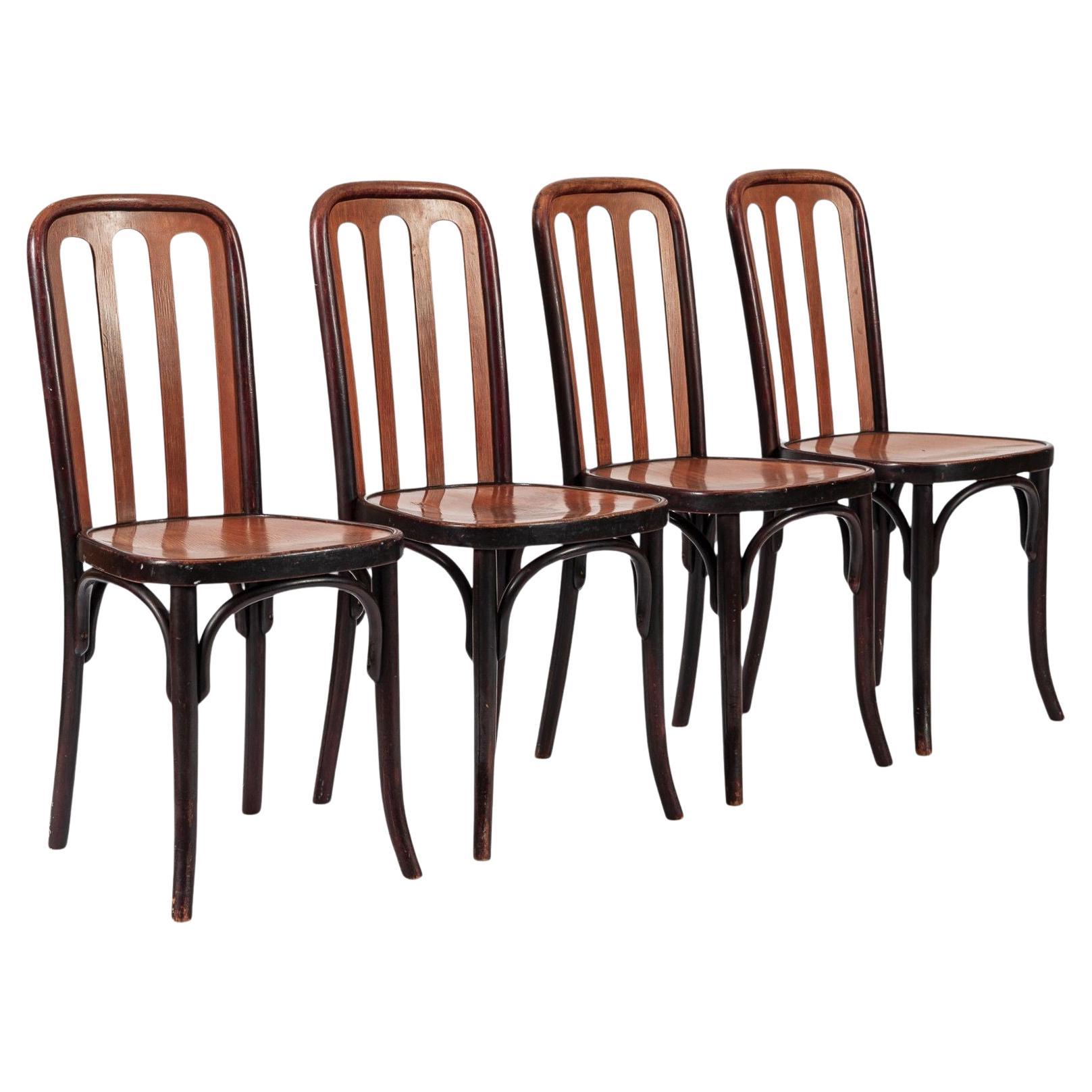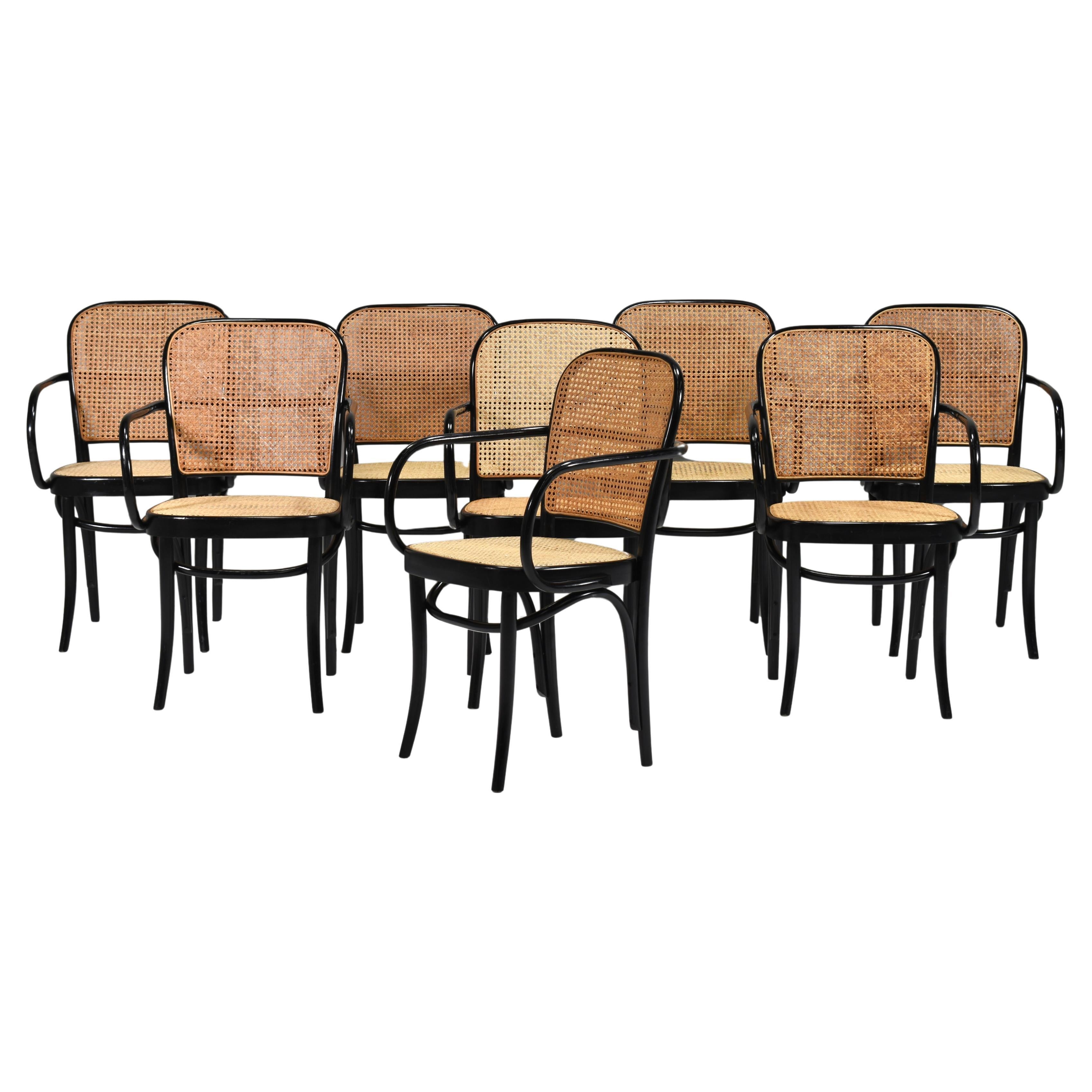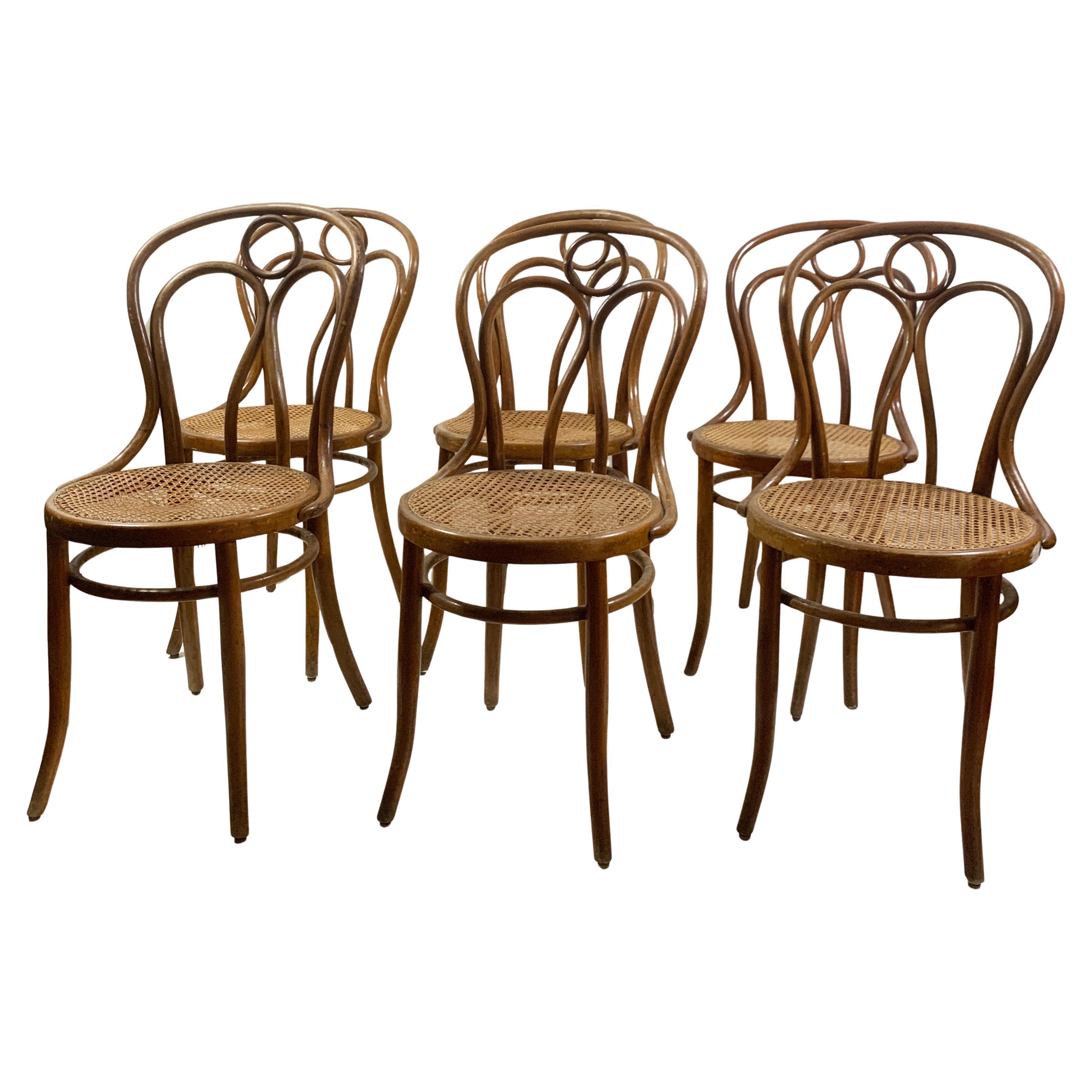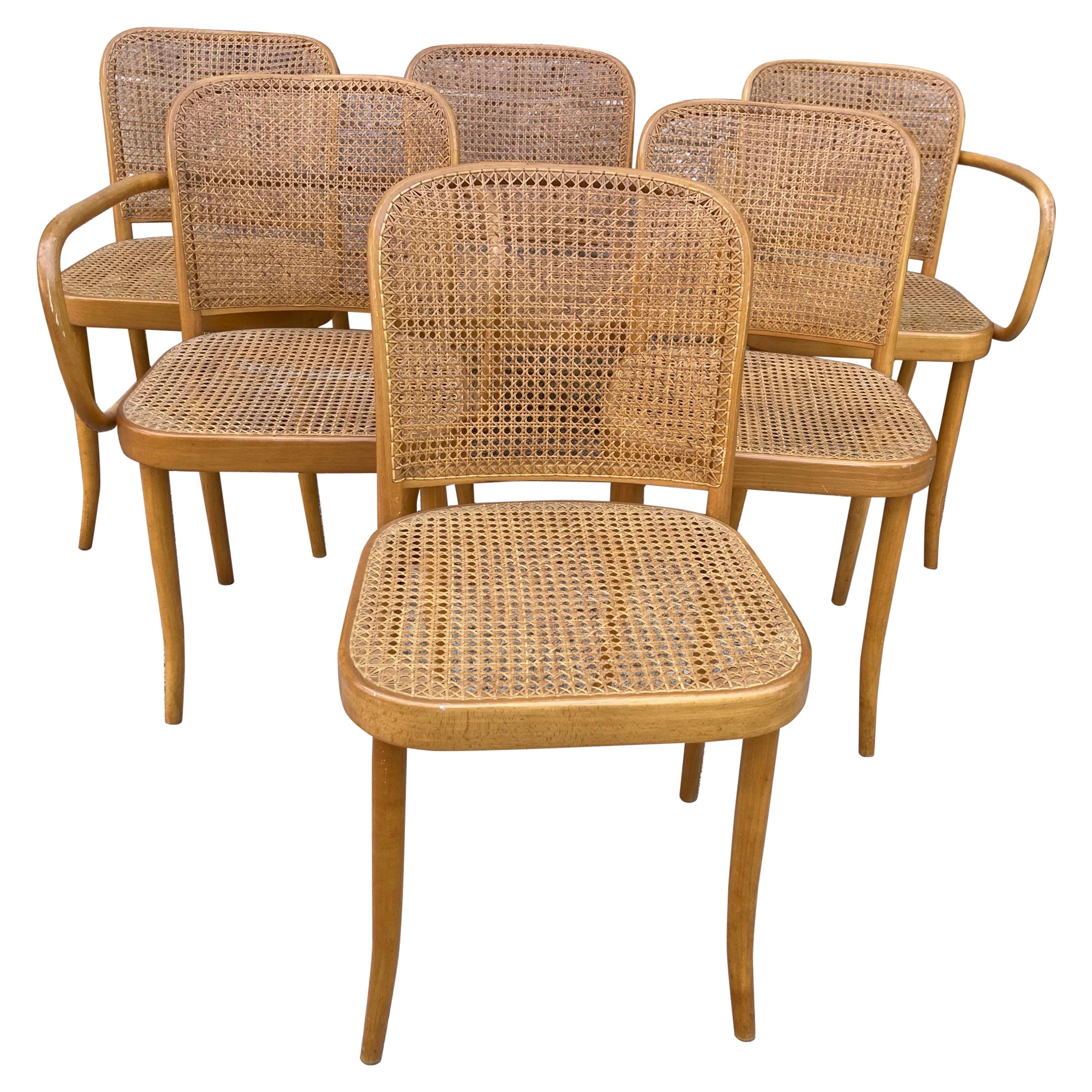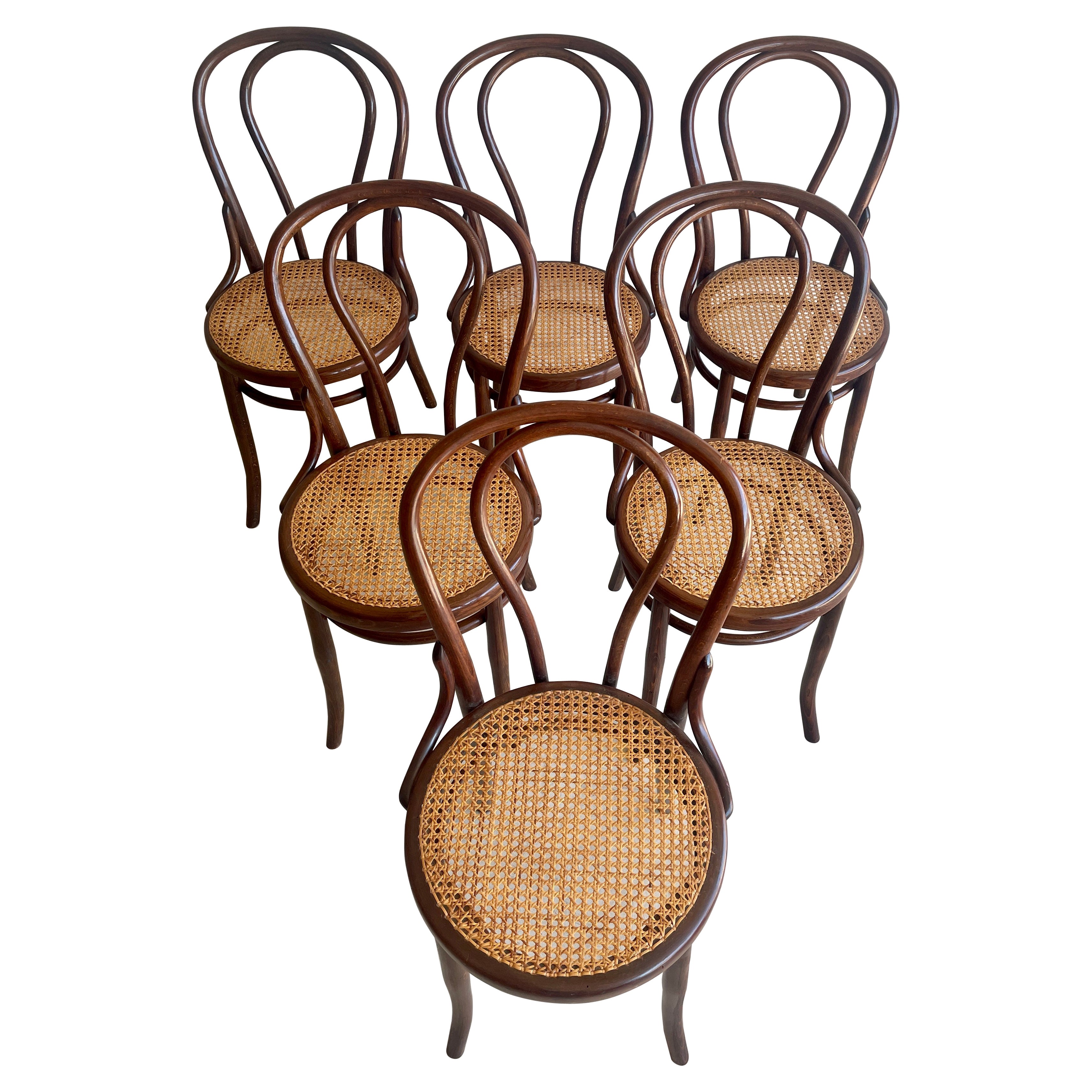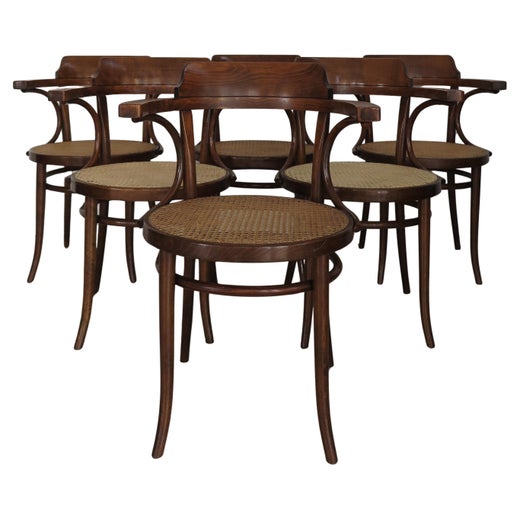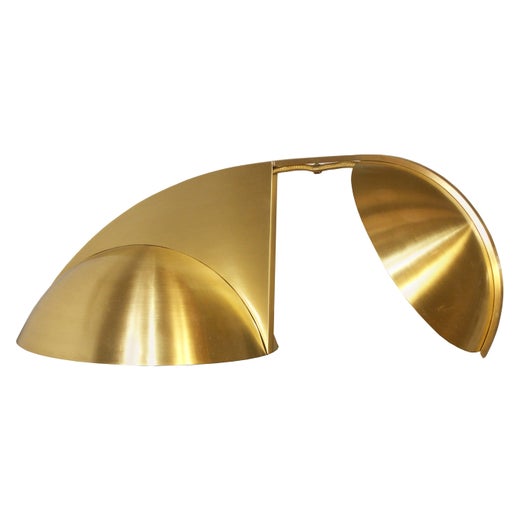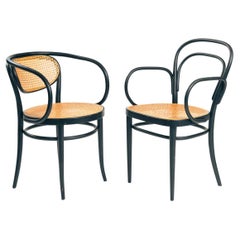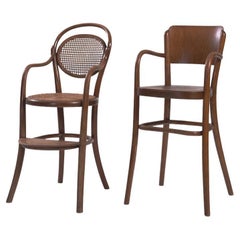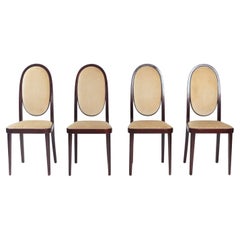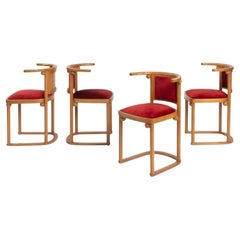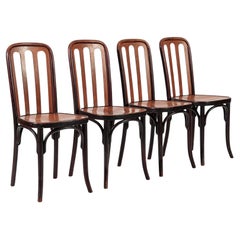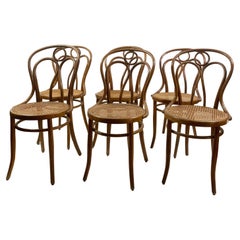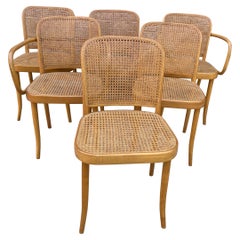Antique Josef Hoffmann Michael Thonet bistro chairs no 14 118 webbing, 1880s, 8p
About the Item
- Creator:Josef Hoffmann (Manufacturer),Michael Thonet (Designer)
- Dimensions:Height: 28.35 in (72 cm)Width: 17.33 in (44 cm)Depth: 17.33 in (44 cm)Seat Height: 18.51 in (47 cm)
- Sold As:Set of 8
- Style:Bauhaus (Of the Period)
- Materials and Techniques:
- Place of Origin:
- Period:
- Date of Manufacture:circa 1880
- Condition:Wear consistent with age and use. Minor structural damages. Antique chairs with obviously signs of use and also a beautiful shine and a lovely patina. The chairs have been cleaned, checked and waxed. The 8 chairs are completely sturdy and stable and are ready for use. Please check the pictures.
- Seller Location:Zevenaar, NL
- Reference Number:1stDibs: LU9519242906672
Michael Thonet
The development of bentwood for use in furniture is one of history’s most significant innovations in design. A range of renowned mid-century modern designers such as Alvar Aalto, Arne Jacobsen, and Charles and Ray Eames drew heavily on this technological advancement, and the success of their enduring works owes to the efforts of pioneering German-Austrian industrialist and designer Michael Thonet — founder of Thonet and widely considered the father of bentwood furniture.
Bentwood furniture dates as far back as the Middle Ages, but it is the 19th-century cabinetmaker and master of parquetry Michael Thonet who is most often associated with this now-classic technique. Thonet in 1856 patented a method for bending solid wood through the use of steam, and from there, the bentwood look skyrocketed to furniture fame. He experimented with bending birch rods into rounded shapes — forming delicately seductive, curving Art Nouveau creations that were a daring departure from the heavy, hand-carved designs attributed to his contemporaries.
The Boppard-born Thonet honed his carpentry skills in his father’s workshop, where he carried out experiments with plywood and modified the Biedermeier chairs that populated the studio. He received an invitation from Austrian Chancellor Prince Metternich to contribute Neo-Rococo interiors to the Liechtenstein City Palace in Vienna. From there, the cabinetmaker gained international recognition, including at London’s Great Exhibition of 1851, which featured works created by members of the Arts and Crafts movement as well as industrial products. Thonet showed a range of furniture at the fair and won the bronze medal for his bentwood chairs. He incorporated his family’s company, the Thonet Brothers — or Gebrüder Thonet — with his sons in 1853.
Considered the world’s oldest mass-produced chair, Michael Thonet’s ubiquitous Chair No. 14 demonstrated that his patented bentwood technology made it possible to efficiently produce furniture on an industrial scale.
Often called the Coffee House chair — the company’s first substantial order was for a Viennese coffeehouse — the No. 14 remains an icon. Thonet originally designed the chair in 1859, and it is considered the starting point for modern furniture. Composed of just six parts, the chair, with its simple, lightweight design, belies its durability. The No. 14 was followed by the No. 18, or the Bistro chair, in 1867, and the 209, or the Architect’s chair, of which Le Corbusier was a fan. (The influential Swiss-French architect and designer used Thonet furniture in his Pavillon de l’Esprit Nouveau at the 1925 International Exposition of Decorative Arts in Paris.)
The business began mass-producing furniture. By the end of the 1850s, there were additional Thonet workshops in Eastern Europe and hundreds of employees. Michael Thonet’s reputation attracted the attention of notable architects including Otto Wagner, Marcel Breuer and Ludwig Mies van der Rohe.
Thonet’s patented bentwood technology also yielded an improvement to rocking chairs for his company — in the middle of the 19th century, Michael produced a series of rockers in which the different curved parts were integrated into fluid, sinuous wholes. Thanks to Thonet, the humble rocker acquired something unexpected: style. And bentwood furniture was embraced by a series of design greats — the innovation can be found in the seating that Josef Hoffman designed for Thonet, in the elegant Superleggera chair created by Gio Ponti and Alvar Aalto’s expressive Paimio armchair.
The No. 14 chair earned a gold medal at the 1867 Paris World’s Fair and reportedly sold 50 million copies prior to World War I. Today it’s a staple furnishing in countless movies, television shows, restaurants, bars and homes.
On 1stDibs, find an array of antique Michael Thonet seating, tables and more.
Josef Hoffmann
The Austrian architect Josef Hoffmann was a central figure in the evolution of modern design, and a leader in an aesthetic movement born in Europe in the late 19th century that rejected florid, extravagant ornamentation in favor of a new emphasis on simplicity of line.
As a founder of the Vienna Secession — a union of artists and designers determined to upend Austria’s artistic conservatism — and later, a founder of the turn-of-the-century Wiener Werkstätte (in English: the Viennese Workshops), a design cooperative that produced superbly crafted furniture and housewares, Hoffmann was a pioneering practitioner of what would become a fundamental principle of modernism: that good design is a way of life.
Hoffmann came of age amidst a shift in the culture of the applied arts, as a conservative order that looked only to the past for inspiration was pushed aside. But what, exactly, would replace that order was in question — and Hoffmann’s career embodies the developing patterns of design’s new spirit. His architectural work reflects his time as a student of the Vienna architect Otto Wagner, who disdained excessive decoration and employed new materials such as steel girders and reinforced concrete to create buildings with airy, open interiors full of light.
As a designer of furniture and interiors, Hoffmann was consistently open-minded about the aesthetics he explored. He was an early adherent of the flowing, organic forms of the Art Nouveau design movement that began to flourish in the late 1880s — but by the opening of the Wiener Werkstätte in 1903, Hoffmann’s designs embraced the beauty of geometry in pieces that feature grids and angular forms.
Hoffmann’s greatest works reflect his ability to combine seemingly conflicting design visions into coherent wholes. His architectural masterpiece, the Stoclet Palace in Brussels, has an exterior that groups together simple geometric forms and spacious interiors marked by subtly naturalistic design details that lend rooms an air of charm and geniality.
Hoffmann’s signature furniture design is an adjustable lounge chair — the Sitzmaschine (1905) — that marries a curving frame with square and rectangular back- and side rests. This piece, like so many others by Hoffmann, reflects a groundbreaking, forward-thinking appreciation for the union of different looks and sources that marks the best of interior design in our own day. Moreover, items offered on 1stDibs — which range from enameled silver jewelry, to silver flower vase baskets and other decorative objects, to sofas, lighting pendants and sconces — testify to the astonishing breadth of Hoffman’s creative pursuits. He was truly a giant of design.
- ShippingRetrieving quote...Shipping from: Zevenaar, Netherlands
- Return Policy
More From This Seller
View AllVintage 1930s Austrian Bauhaus Dining Room Chairs
Beech, Rattan
Vintage 1920s Austrian Bauhaus Chairs
Rattan, Bentwood
Vintage 1930s Austrian Jugendstil Dining Room Chairs
Velvet, Beech
Vintage 1920s Austrian Art Nouveau Dining Room Chairs
Cotton, Beech, Bentwood
Vintage 1980s German Post-Modern Dining Room Chairs
Bentwood
20th Century Italian Mid-Century Modern Dining Room Chairs
Straw, Beech
You May Also Like
Vintage 1920s Austrian Arts and Crafts Dining Room Chairs
Wood, Bentwood
Vintage 1920s Austrian Bauhaus Dining Room Chairs
Beech, Cane, Bentwood
Early 20th Century Austrian Art Nouveau Chairs
Cane, Bentwood
Vintage 1960s Dining Room Chairs
Cane, Bentwood
Vintage 1910s Hungarian Vienna Secession Dining Room Chairs
Beech, Bentwood
Mid-20th Century Polish Mid-Century Modern Chairs
Cane, Wood
